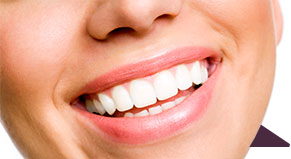Gum Discoloration Treatments for Black Gums and White Gums
May 28th, 2015
 It can be pretty alarming to wake up and notice that your gums are getting darker. After all, they’re a huge part of your smile. Gum discoloration can be a natural occurrence, or they can be a sign of serious health problems that need to be addressed immediately. Thankfully, there are steps you can take to treat your discolored or black gums and get them looking healthy again, depending on the cause. Here are a few of the most common treatment options for gum discoloration.
It can be pretty alarming to wake up and notice that your gums are getting darker. After all, they’re a huge part of your smile. Gum discoloration can be a natural occurrence, or they can be a sign of serious health problems that need to be addressed immediately. Thankfully, there are steps you can take to treat your discolored or black gums and get them looking healthy again, depending on the cause. Here are a few of the most common treatment options for gum discoloration.
Treatments for Dark or Black Gums
Nothing! Love Your Gums for Their Natural Color
Some people are born with naturally darker gums than others. It’s completely normal. Gum color varies just like skin color does. If you have a darker skin tone, it’s likely you have darker gums because your body produces more melanin. You don’t need any treatment - your gums are healthy and beautiful just the way they are!
Gum Disease Therapy
If your gums suddenly get darker or turn black over time, it’s likely you have a problem. One very serious issue that causes black discoloration is acute necrotizing periodontal disease, also known as black gum disease. When you have this disease, your gum tissue becomes black as it dies, or experiences necrosis. Along with a change in color, you may notice severe pain, a foul smell and bleeding gums. If you don’t treat black gum disease, it can spread to your cartilage and then your bone. Not good.
Your dentist can treat periodontal disease with gum disease therapy. A gum disease specialist will work on fixing damage to your gum tissue, teeth and bones with surgical and/or non-surgical procedures to alleviate infection and promote gum and tooth reattachment. The exact treatment will depend on the severity of gum disease.
Ask Your Doctor For Alternative Medications
Some types of medication are known to cause gum discoloration. These include minocycline, tricyclic antidepressants and metal-based crown fillings. Though they don’t necessarily harm your gums, they can cause areas of black or grey pigmentation, which doesn’t look to great. If your gums start changing color after you begin taking new medication, speak with your doctor to find out about the medication’s side effects. If gum discoloration is a known side effect, ask your doctor about alternative medications.
Put Out Your Cigarette Once and For All
Along with increasing your risk of getting gum disease, tooth discoloration, oral cancer and many other oral problems, the chemicals in cigarettes can cause gum discoloration. The best thing you can do for your mouth, both cosmetically and for its health, is to stop smoking once and for all. And don’t think e-cigarettes are good for your mouth either. When you stop smoking and vaping, you’re helping your mouth look and feel as healthy as possible for as long as possible.
Treatments for White Gums
Thrush Treatment
If you notice white discoloration in the form of lesions on your gums, you may have thrush. Thrush is a mouth infection caused by fungus. You might run into this problem if you’re stressed, get certain illnesses or take particular medications. Your dentist will provide treatment based on your age and the cause of the thrush. Many times, your dentist will just scrape the fungus from your gums and tell you how to prevent it from regrowing in the future. They may also refer you to a doctor for further treatment.
Leukoplakia Treatment
Another cause of white patches developing on your gums is leukoplakia, a precancerous condition that usually stems from smoking or alcohol consumption. Stopping both of those activities may completely take care of the patch. If that doesn’t work, your dentist may remove the patch with a scalpel, laser or freezing methods. This can help to reduce the risk of developing mouth cancer. If you have leukoplakia, it’s important to check in with your dentist regularly so they can monitor your condition.
Experiencing gum discoloration? Come on into Water Tower Dental Care, Chicago’s #1 general and cosmetic dentist! Our friendly staff will take a look at your gums to find out the cause of the change in color and the best treatment to fix it. You can meet our doctors before you come in here!

 Many people who wear braces are worried about keeping their teeth white. After all, cleaning your teeth is much more difficult with braces, and you can’t really use teeth-whitening products on the part of your teeth that’s covered up. What you can do, though, is prevent your teeth from discoloring. Find out how to do this with these 11 easy tips from our dental experts.
Many people who wear braces are worried about keeping their teeth white. After all, cleaning your teeth is much more difficult with braces, and you can’t really use teeth-whitening products on the part of your teeth that’s covered up. What you can do, though, is prevent your teeth from discoloring. Find out how to do this with these 11 easy tips from our dental experts.






 Website Powered by Sesame 24-7™
Website Powered by Sesame 24-7™